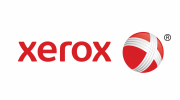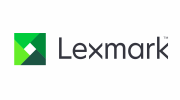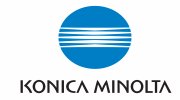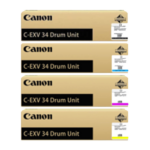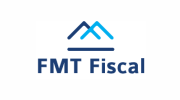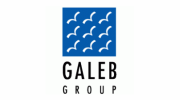Content
People have always come together to create value in the form of progress toward what is regenerative finance a shared goal, be it the creation of art or the development of infrastructure, but cryptocurrency projects have clearly illustrated that such a group can denominate that value in a novel currency. As long as the product of a community’s goal is valued by the greater population, we should expect that the world at large should support the community due to the gains from trade that result. This should, in turn, allow any community working toward positive and valuable impact to be regenerative, provided that their impact is valued by any other community that also produces goods or services. We should expect to see a renaissance of online communities as ReFi tooling becomes easier to use, resulting in not just gains from trade, but new forms of trade, as non-financial contributions to human flourishing are recognized and valued between communities.
Join our free newsletter for daily crypto updates!
Impact certificates are NFT-based certificates issued to verify impact on a variety of causes, chosen by the community or organization issuing them. https://www.xcritical.com/ Finally, community-based tokens can have rewards for people that patronize certain small businesses and return automated royalties to a shared community treasury for public goods projects. Regenerative Finance (ReFi) is a model that uses money to incentivise communities to solve systemic issues.
Two examples on how ReFi can touch people’s lives
Kevin forex crm Owocki is a blockchain expert, CEO/founder of SuperModular and co-founder of Gitcoin, a venture studio that builds regen web3 projects and has helped to raise and distribute over $72 million for open-source projects. His new business venture SuperModular, aims to build a modular stack of products used specifically for public goods and funding tools. Prior to his career in web3, Kevin spent 15 years in the world of web2, working as a CTO and founder of open-source software and web startups. The Voluntary Carbon Market indirectly tries to incentivize the funding of carbon reduction projects.
DAOs and collectives organize individuals to drive capital or time toward real-world impact.
This could open an entirely new avenue of possibilities that incentivize taking positive climate action. The Regenerative Finance (ReFi) movement aims to fundamentally transform the governance of global common pool resources (CPRs), such as the atmosphere, which are being degraded despite international efforts. The ReFi movement seeks to achieve this by utilizing digital monitoring, reporting, and verification (D-MRV); tokenization of assets; and decentralized governance approaches. However, there is currently a lack of a clear path forward to create and implement models that actually drive the “Re-” in ReFi beyond perpetuating the existing extractive economics and toward actual regeneration. In addition, ReFi suffers from growing pains, lacking a common interoperability framework and definition for determining what a ReFi project is and how the individual components align toward the grand ambition. This paper provides a definition of the ReFi stack of interconnected components and examines how it can address limitations in climate change accounting, finance and markets, and governance.
Awesome Oscillator Trade Indicator In Cryptocurrency
In general, ReFi aims to create economic systems that enable harmonious interactions between humans and natural ecosystems. Regenerative Finance (ReFi) is a growing Web3 field that offers an opportunity to rethink how we approach finance, investing, and sustainable economic development. ReFi takes a holistic approach to finance and development, considering the environmental, social, and economic impacts of financial decisions, and aims to create a regenerative economic ecosystem rather than following a primarily extractive approach. The growth of ReFi is driven by trends in understanding economic interdependence with nature, the fragility of extractive economic systems and supply chains, and using blockchain technology to enable natural regeneration for climate causes at scale.
Fullerton’s (2015) eight principles for regenerative economics emphasized the importance of balancing the human economy with the natural world and prioritizing the creation of long-term value for people and the planet. This approach prioritizes the integration of social and environmental aspects into economic decision-making processes. The principles emphasize the need for democratic decision-making processes, community-based solutions, diversity, interconnectivity, and a balance between short- and long-term goals. As blockchain technology continues to proliferate and change how industries conduct business, relate to consumers, and deliver value, ReFi imagines a path forward that acknowledges the entire ecosystem involved in economic transactions.
The authors also examine the theory of regenerative economics and CPRs to encourage further discussions and advancements in the ReFi space. The crucial question remains if and how ReFi can drive a change in paradigm toward the effective regeneration of global CPRs. Immediate Acceleration – high impact finance-related activities that can greatly accelerate the flow of capital and other resources to regenerative approaches to climate resilience throughout the Commonwealth. These activities do not depend on policy shifts or fundamental systems transformations. In this paper, we define the structure of the ReFi stack and explain how different approaches can address present limitations in climate change accounting, markets, and governance.
The centralized governance strategy solves this dilemma by scaling up the actions of the appropriators to match the scale of the CPR dynamics. An earlier application of this centralized approach in the climate space was the clean development mechanism (CDM) under the Kyoto Protocol. The problem with centralization at the global level is that it runs against national sovereignty, thereby making this option impossible for the governance of global commons. For instance, the protection of common goods such as fish stocks in the high sea is difficult to achieve despite the existence of international regulation applying to many jurisdictions (e.g., Sections 86 and 87 of the United Nations Convention on the Law of the Sea, 1982). However, the effective governance of such common resources is left to a few powerful nations that have little incentive to collaborate other than for strategic or extractive economic purposes. Instead, local initiatives that acknowledge this dilemma and work to ensure they do not overexploit a resource without replenishing it in an accordant ratio could provide inspiration.
You will gain access to foundational sessions on Regenerative Economic theory in the Finance Program course content. Dive in to the 8-week transformational journey re-imaging our economic and financial systems in service to life for 30 hours of your life. Join the interest list to be the first to know when enrollment re-opens for the program. This program requires the completion of two online courses, Investment for a Regenerative Economy and Money & Banking for a Regenerative Economy. Enroll in an individual course for 15 hours of paradigm-shifting insights, or commit to the full transformational program re-imaging our economic and financial systems in service to life for 30 hours of your life.
In contrast, DeFi lending platforms are accessible to everyone (as long as the lender is able to provide collateral), and they often offer very competitive interest rates. In DeFi, services often offered by companies or other centralized parties (i.e. banks or stock exchanges) are replaced by smart contract applications. These computer programs can run and maintain different financial products such as single and joint bank accounts, lending services, or currency exchanges. Blockchains offer a secure and public way to store and share information across a network of computers. Once information is added to the blockchain, it can’t be altered or deleted by anyone — that’s why people often say that blockchains are a “tamper-proof storage of data”. For more information and updates on ReFi, visit Carbon Copy and ReFi DAO, the leading sources of news, education, and analysis in the regenerative finance space.
Certificate traceability and transparent data exchange could create resilient proofs of authenticity, protecting against transnational sales and frauds. Net-zero pledges are made by many organizations and governments, committing to reduce their GHG emissions to zero or to offset any remaining emissions through the purchase of carbon offsets. In order to achieve pledges not subject to regulatory requirements, organizations or individuals can use the voluntary carbon offset markets to purchase offsets. Climate data management is the collection, storage, organization, and use of climate-related data.
Lastly, planning for institutional adaptation and change is crucial to ensure the regeneration of global commons. However, the counterargument is that ReFi only perpetuates the current extractive logic and does not result in a true regeneration of the atmosphere by driving the increasing commodification of nature. This commodification of carbon assets primarily leads to short-term thinking, with a focus on buying and selling carbon credits rather than making long-term investments in sustainable practices and infrastructure.
- Blockchain uses cryptography and time-stamping to store the data, making the history immutable and the system data resistant to tampering (Kewell et al., 2017; Franke et al., 2020).
- Web3 aims to build user-centric digital spaces and services that are accessible to everyone, regardless of their background, nationality, or other factors.
- It is based on the idea that finance should work in a way that supports the health and well-being of the planet and its people.
- There’s room for many more investors in this space, as the demand for patientcapital deployed to optimize both financial return and impact outstrips supply.
- A bit about me, my name is Nihar Neelakanti, Co-founder and CEO of Ecosapiens, a metaverse enabling consumers to fight climate change.
- Governance systems in the form of information commons are built upon freedom of access and, thus, are nonexclusive in nature.
The Boston Impact Initiative Fund directly supportsentrepreneurs using a spectrum of integrated capital tools — loans, creditenhancements, equity investments, royalty finance, direct public offerings,crowdfunding, grants and more — with a focus on economic justice. When choosinginvestments, the fund applies a race-based lens that considers the enterprise’sownership, opportunities for meaningful livelihood and advancement, and thedegree of worker participation in allocating resources and setting directions. Across the spectrum of funding, BIPOC (Black, Indigenous and people of color)entrepreneurs are routinely overlooked or underfunded by conventional investors,venture capital firms, and commercial banks. Founders of color also facesignificantly higher hurdles in obtaining capital than their white counterparts.Regenerative finance can redress the ways in which conventional finance createsand maintains inequality, as well as fund community-driven projects and BIPOCentrepreneurs.
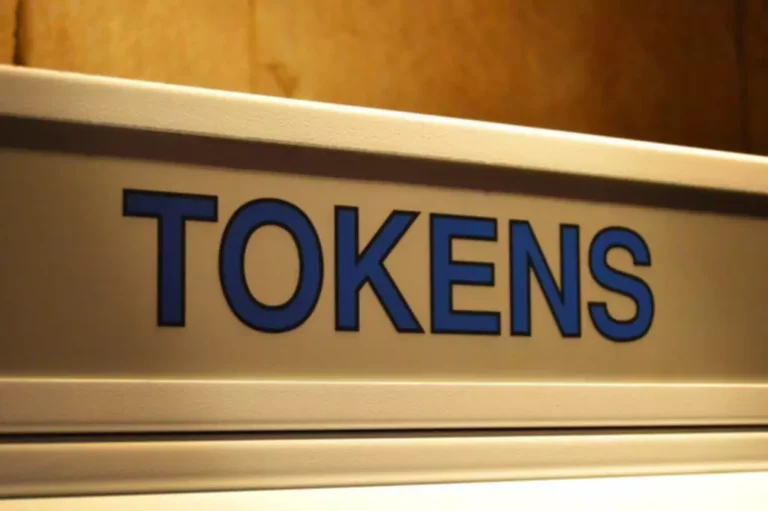
Additionally, the authors express their gratitude to the Climate Collective team, especially Anna Lerner, Alison Filler, and Nirvaan, for generously sharing data and insights into the current ReFi community. And if you have ReFi application ideas that you want to see live, join the Bitcoin Scaling Hackathon and showcase your talent in the realm of Bitcoin-powered smart contracts and Web3 solutions. Its aim is to ensure that financial services are not limited to the privileged few but are accessible to everyone. It could incentivize lending to certain social or ecological projects, or it might incorporate a system that ensures a more equitable distribution of interest. Rather than just rewarding the largest contributors, it could take into account other factors that align with the ReFi vision. Traditional Finance (TradFi) and Regenerative Finance (ReFi) are fundamentally different in their approach and goals.
At a global CPR scale, arriving at a common understanding becomes even more challenging due to diverging collective interests as appropriators come from all cultures, all countries, all political-economic systems, and all political ideologies (Stern, 2011). Centralized and manual legacy registries are currently the primary source of all ReFi assets, challenging the decentralized ReFi ethos. Similarly, blockchain technology is frequently hailed as a tool to automate governance while neglecting that the “governance of blockchain” (Ølnes et al., 2017) also raises a number of new governance challenges. Biocredits, on the other hand, are an emerging financial market that also turns ecosystem restoration and biodiversity enhancement into profitable ventures. In this system, businesses or governments can earn credits by engaging in projects that restore natural habitats or improve ecological health. With credits being tradable, organizations can offset their environmental impact by purchasing them, creating a direct financial incentive for environmental preservation and regeneration.








